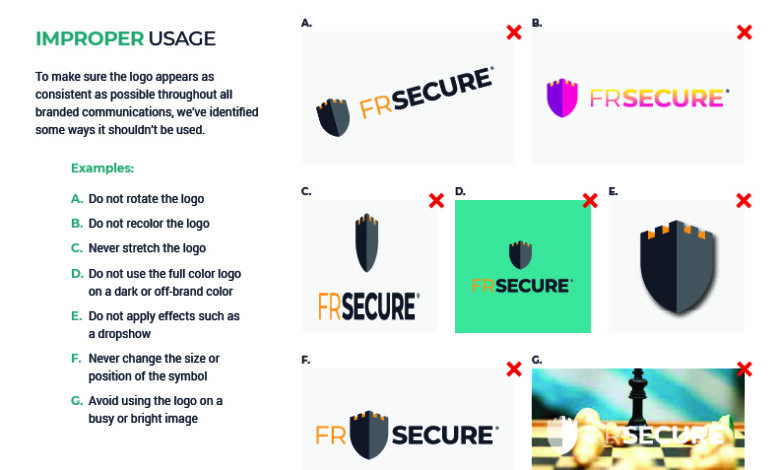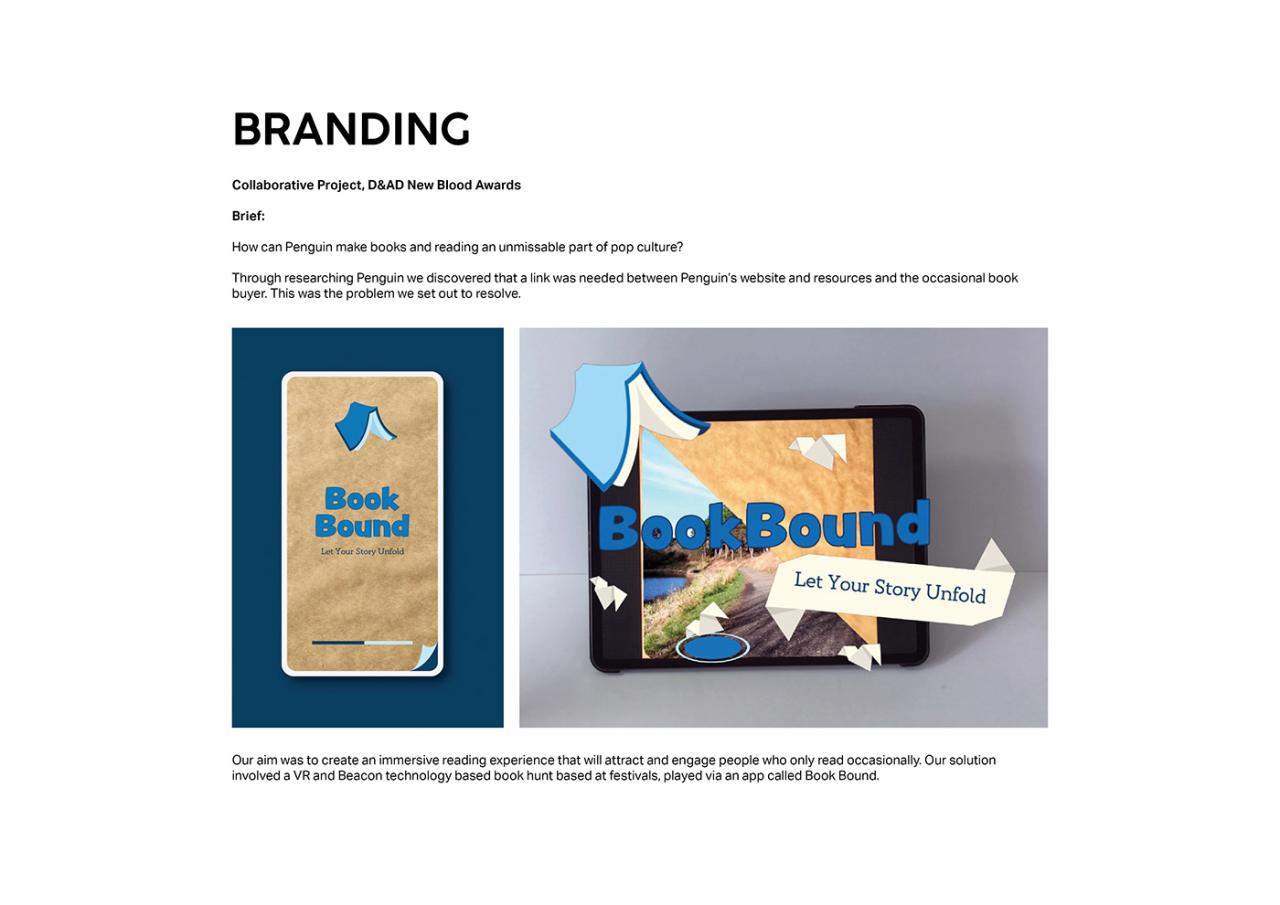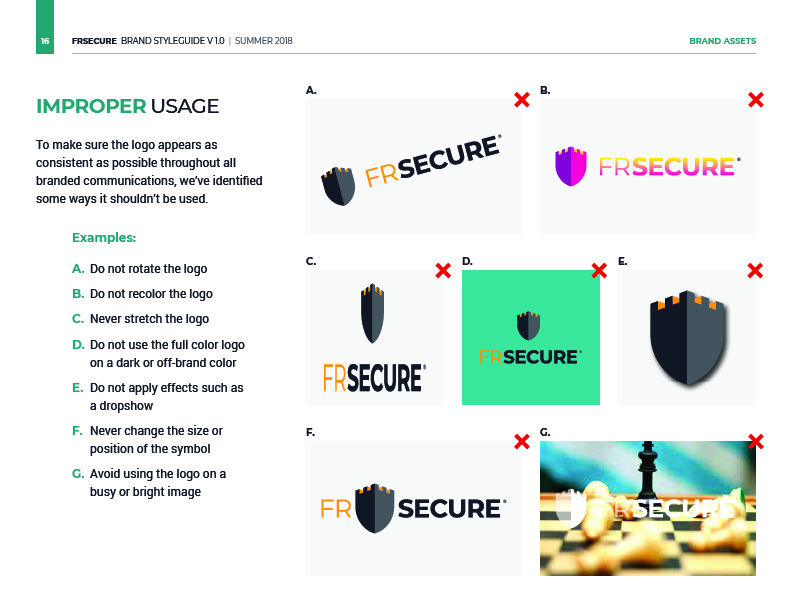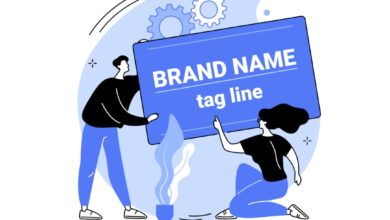
Work with Brand Guidelines 2 Mastering Brand Consistency
Work with Brand Guidelines 2 dives deep into the practical application of brand guidelines, moving beyond the theoretical to explore real-world scenarios and successful strategies. We’ll uncover how consistent brand application across all platforms—from social media to websites—is crucial for building a strong, recognizable brand identity. This isn’t just about logos and colors; it’s about crafting a cohesive brand experience that resonates with your audience and drives results.
This post explores the core components of a robust brand guideline document, providing actionable methods for integration into your workflows. We’ll examine successful case studies, highlighting both triumphs and pitfalls in brand guideline implementation. You’ll learn how to design marketing materials, build websites, and even craft a compelling brand voice and tone, all while maintaining consistency across every touchpoint.
Get ready to elevate your brand’s impact!
Understanding Brand Guidelines
Brand guidelines are the bible for any company striving for consistent and memorable brand recognition. They’re more than just a style guide; they’re a comprehensive roadmap outlining how your brand should look, feel, and sound across all platforms. Ignoring them can lead to a diluted brand image and confusion among your target audience.
Core Components of Brand Guidelines
A robust brand guideline document typically includes several key sections. These components work together to create a holistic representation of your brand identity. A missing component can weaken the overall effectiveness of the guidelines. For example, neglecting a section on brand voice can lead to inconsistent messaging across different platforms. Key sections often include a brand overview (mission, vision, values), logo usage specifications (color palettes, variations, clear space), typography (font choices, hierarchy), imagery guidelines (photography style, illustrations), and brand voice and tone (personality, messaging style).
Importance of Consistent Brand Application
Consistency is paramount. A unified brand experience across all touchpoints – from your website and social media to your packaging and marketing materials – builds brand recognition and trust. Inconsistency, on the other hand, can confuse consumers and damage brand credibility. Think of Coca-Cola: its iconic red and white color scheme is instantly recognizable globally. This consistency, maintained across decades and countless marketing campaigns, is a testament to the power of consistent brand application.
Conversely, a company with inconsistent branding might use different logos, color palettes, or fonts across its website and social media, leading to a fragmented and unprofessional image.
Types of Brand Guidelines
Brand guidelines aren’t a one-size-fits-all document. They often encompass various aspects of brand identity. Visual brand guidelines focus on the visual elements: logo, color palette, typography, imagery style. Voice and tone guidelines define the brand’s personality and how it communicates – its language, style, and overall messaging. For instance, a tech startup might adopt a playful and informal voice on social media, while a law firm would likely opt for a formal and professional tone.
Additional guidelines might cover specific applications, such as website design, packaging, or advertising.
Hypothetical Brand Guideline Section: Social Media Posting
This section Artikels the rules and best practices for social media posts.
All social media posts must adhere to the brand’s voice and tone guidelines (defined elsewhere in this document).
Images must be high-resolution and consistent with the brand’s visual style guide. Avoid using low-quality or blurry images.
Hashtags should be relevant and strategically chosen to increase visibility. A list of approved hashtags will be maintained and updated regularly.
All posts should be reviewed and approved by the marketing team before publishing. This ensures consistency and adherence to brand guidelines.
Regularly monitor and respond to comments and messages on social media platforms. Maintain a positive and professional tone in all interactions.
Use a consistent posting schedule to maintain engagement with followers. Consider using a social media scheduling tool to plan and schedule posts in advance.
Practical Application of Brand Guidelines

Source: topgrowthmarketing.com
So, you understand
- why* brand guidelines are crucial. Now let’s dive into the
- how*. Successfully implementing brand guidelines isn’t just about having a document; it’s about integrating them seamlessly into your daily operations and ensuring everyone understands and adheres to them. This section will explore practical strategies for making your brand guidelines a living, breathing part of your company culture.
Effective brand management relies heavily on consistent application of the guidelines. Inconsistency dilutes your brand message and can confuse your audience. By embedding these guidelines into your workflows, you ensure a unified brand identity across all platforms and touchpoints, leading to stronger brand recognition and customer loyalty.
Integrating Brand Guidelines into Workflows
The key to successful integration is making your brand guidelines easily accessible and user-friendly. A simple, well-organized document is crucial, but that’s only half the battle. Consider these methods:
- Create a centralized, digital repository: Use a platform like Google Drive, Dropbox, or a dedicated brand management system to ensure everyone has access to the most up-to-date version. This avoids confusion caused by outdated or conflicting versions.
- Provide training and workshops: Don’t just hand out the guidelines; actively train your team on their application. Interactive workshops can reinforce understanding and encourage questions.
- Incorporate guidelines into project briefs: Make it a mandatory requirement for every project to reference and adhere to the brand guidelines. This ensures consistency from the outset.
- Regularly review and update guidelines: Brand guidelines aren’t static; they should evolve with your brand. Schedule regular reviews to ensure they remain relevant and reflect your current brand identity.
Brand Guidelines and Brand Consistency
Brand consistency is the cornerstone of successful branding. It’s about ensuring a unified experience for your customers across all touchpoints. Brand guidelines act as the blueprint for achieving this consistency. They define everything from your logo usage and color palette to your tone of voice and messaging.
Maintaining consistency builds trust and recognition. When customers consistently see your brand presented in the same way, they develop a stronger association with your values and offerings. This leads to increased brand loyalty and a more positive perception of your company.
Consistent application of brand guidelines is paramount for building a strong, recognizable brand.
So, we’re deep into Work with Brand Guidelines 2, and I’m finding the visual consistency a real challenge. To help brainstorm fresh ideas, I’ve been watching some awesome video tutorials – I highly recommend checking out this fantastic resource on getting it on with YouTube for some killer tips on video marketing. It’s given me a whole new perspective on how to apply those brand guidelines in a dynamic, engaging way, which is crucial for Work with Brand Guidelines 2.
Creating Marketing Materials Using Brand Guidelines
Your brand guidelines should be your go-to resource when creating any marketing materials. They provide a clear framework for ensuring consistency in design, messaging, and overall brand presentation. Let’s illustrate this with a simple example: creating a social media post.
- Refer to the color palette: Select colors from your approved palette to maintain visual consistency.
- Use approved fonts: Choose fonts specified in your guidelines for readability and brand recognition.
- Adhere to the tone of voice: Ensure your messaging aligns with your brand’s personality – is it playful, formal, or sophisticated?
- Use approved imagery: Select images that reflect your brand’s aesthetic and resonate with your target audience.
- Review for consistency: Before publishing, ensure the post aligns with all aspects of your brand guidelines.
Designing a Website Using Brand Guidelines: A Step-by-Step Procedure
Building a website that accurately reflects your brand requires meticulous adherence to your brand guidelines. This step-by-step procedure will guide you through the process:
- Review the guidelines thoroughly: Familiarize yourself with every aspect of your guidelines, paying close attention to color palettes, typography, imagery, and overall design principles.
- Develop a sitemap: Plan the structure and navigation of your website, ensuring a logical and user-friendly experience.
- Choose a template or design from scratch: Select a template that aligns with your brand’s aesthetic or work with a designer to create a custom design that adheres strictly to your guidelines.
- Implement the brand’s visual elements: Apply the approved color palette, fonts, and imagery consistently throughout the website.
- Write website copy: Ensure all text adheres to the brand’s tone of voice and messaging guidelines.
- Test and refine: Thoroughly test the website on different devices and browsers to ensure it functions correctly and looks consistent across platforms.
- Obtain approvals: Before launching, obtain necessary approvals from stakeholders to ensure the website meets all brand requirements.
Case Studies: Work With Brand Guidelines 2
Understanding how brands successfully implement their guidelines is crucial for achieving consistent brand messaging and overall success. This section explores several case studies showcasing effective brand guideline implementation, contrasting approaches across different industries, and highlighting instances of guideline failures.
Successful Brand Guideline Implementations
Three brands stand out for their effective use of brand guidelines: Coca-Cola, Apple, and Nike. Coca-Cola’s globally consistent brand identity, built on its iconic logo and red color scheme, demonstrates the power of clear, concise, and universally applied guidelines. Apple’s minimalist aesthetic, reflected in its product design, packaging, and marketing materials, stems from rigorous adherence to its brand guidelines.
Nike’s focus on athletic performance and innovation is consistently conveyed through its strong visual language and brand messaging, reinforced by well-defined guidelines. These brands show how strong guidelines contribute to brand recognition, customer loyalty, and ultimately, profitability.
Cross-Industry Comparison of Brand Guideline Implementation
While the principles of brand guideline implementation are consistent across industries, the specific approaches vary significantly. In the fast-moving consumer goods (FMCG) sector, like Coca-Cola, guidelines emphasize consistency across a vast range of products and marketing channels. Technology companies, such as Apple, prioritize a sleek and minimalist aesthetic, reflecting their focus on innovation and user experience. In the sportswear industry, Nike’s guidelines focus on conveying athleticism, dynamism, and a sense of empowerment.
These different approaches reflect the unique brand identities and target audiences of each industry.
Comparative Analysis of Competing Brands
The following table compares the brand guidelines of three competing companies within the coffee industry: Starbucks, Dunkin’, and Costa Coffee.
| Brand | Visual Identity | Brand Voice | Target Audience |
|---|---|---|---|
| Starbucks | Premium, sophisticated design; green color scheme; iconic siren logo | Upscale, welcoming, emphasizes experience and community | Affluent, experience-seeking consumers |
| Dunkin’ | Bright, friendly design; orange and pink color scheme; simple logo | Casual, approachable, emphasizes convenience and affordability | Broader consumer base, value-conscious |
| Costa Coffee | Warm, inviting design; brown and beige color scheme; sophisticated logo | Relaxed, friendly, emphasizes quality and comfort | Consumers seeking a balanced price-quality ratio |
Examples of Brand Guideline Failures and Consequences
Failure to adhere to brand guidelines can lead to inconsistent brand messaging, diluted brand equity, and ultimately, damage to brand reputation. For example, a company that allows inconsistent use of its logo across different marketing materials might appear unprofessional and unreliable. Similarly, a company that fails to maintain a consistent brand voice across its communications might confuse its target audience and weaken its brand identity.
Gap’s 2010 logo redesign is a prime example of a brand guideline failure that led to significant negative feedback and ultimately, a return to the previous logo. The lack of thorough testing and consideration for brand heritage led to a costly and ultimately unsuccessful rebranding effort. Another example could be a company’s failure to maintain consistency in its product packaging, potentially confusing customers and leading to decreased sales.
Visual Identity and Brand Guidelines

Source: behance.net
Visual identity is the cornerstone of any successful brand. It’s the visual representation of your brand’s personality, values, and promise to your customers. Brand guidelines, therefore, aren’t just a set of rules; they’re a strategic document ensuring consistent and effective communication of that visual identity across all platforms. They act as a compass, guiding everyone involved in the brand’s visual presentation, from marketing materials to product packaging.The consistent application of brand guidelines ensures a unified brand experience for customers, building recognition and trust.
Inconsistent branding can lead to confusion and dilute the impact of your marketing efforts.
The Role of Visual Elements in Brand Guidelines
Logo, color palettes, and typography (fonts) are the building blocks of a brand’s visual identity. Brand guidelines meticulously define how these elements should be used to maintain a cohesive and professional image. The logo, as the central symbol, requires specific guidelines on minimum size, clear space (the area surrounding the logo), acceptable variations (e.g., monochrome versions), and prohibited uses (e.g., distortions or alterations).
Color palettes define the brand’s personality—for example, vibrant colors might convey energy and youthfulness, while muted tones might suggest sophistication and stability. Font choices convey a specific tone; a serif font might indicate tradition, while a sans-serif font might suggest modernity. Brand guidelines will specify primary and secondary fonts, along with their appropriate uses in headings, body text, and other applications.
Logo Usage Mockups
Imagine a hypothetical brand, “EcoFlow,” a sustainable energy company. Their logo features a stylized green leaf within a circle. The brand guidelines would specify the following:* Primary Logo: A full-color version of the leaf within the circle, on a white background. This is the preferred version for all primary applications. A mockup would show this logo prominently displayed on their website header, product packaging, and marketing brochures.* Secondary Logo (Monochrome): A black and white version of the logo, suitable for use on grayscale materials or situations where color printing is not feasible.
A mockup would depict this version on a black and white business card and a grayscale advertisement.* Minimum Size: The logo should never be smaller than 1 inch in diameter. A mockup would show the logo at the minimum size alongside an example of the logo being used incorrectly, too small.* Clear Space: A clear space equivalent to the logo’s diameter should always surround the logo to ensure readability.
A mockup would demonstrate the correct and incorrect use of clear space.* Prohibited Uses: The logo should never be distorted, stretched, or altered in any way. A mockup would show examples of unacceptable logo alterations (e.g., a stretched logo or a logo with added elements).
Maintaining Consistent Visual Identity Across All Media
Maintaining a consistent visual identity across all media—website, social media, print materials, packaging, etc.—is paramount. Inconsistency can confuse customers and weaken brand recognition. Brand guidelines serve as the central reference point, ensuring that everyone involved in creating brand materials adheres to the established visual standards. This consistent application creates a unified brand experience, fostering trust and reinforcing brand recall.
For instance, using the same color palette and fonts across the company website, email marketing campaigns, and physical brochures reinforces brand recognition and creates a cohesive customer experience. A mismatch in these elements would confuse the customer and dilute the impact of the branding.
Style Guide: Color Palettes and Font Pairings
This section details the acceptable color palettes and font pairings for EcoFlow.
| Color Name | Hex Code | Pantone (if applicable) | Usage |
|---|---|---|---|
| Eco Green | #008000 | 349 C | Primary brand color; used for logos, headlines, and call-to-actions. |
| Forest Green | #228B22 | N/A | Secondary color; used for accents and background elements. |
| Neutral Gray | #808080 | N/A | Used for text and subtle background elements. |
| Off-White | #F5F5F5 | N/A | Used as a background color. |
Font Pairings:
Primary Font: Open Sans (sans-serif)
-used for body text, and smaller headings.
Secondary Font: Merriweather (serif)
-used for larger headings and titles, where a more classic and sophisticated feel is desired.
These font pairings ensure readability and maintain a consistent visual style across all brand materials. Using only these fonts prevents visual inconsistencies and ensures brand unity.
Brand Voice and Tone in Guidelines
Defining and implementing a consistent brand voice and tone is crucial for building a strong brand identity. Your brand guidelines should clearly articulate the desired personality and communication style, ensuring all brand interactions resonate with your target audience. This involves more than just choosing a few adjectives; it requires a deep understanding of your brand’s values and how they translate into language.
Brand voice refers to the overall personality of your brand as expressed through words. It’s the unique character that makes your brand recognizable and memorable. Tone, on the other hand, is the specific mood or attitude conveyed in a particular piece of communication. The voice remains consistent, while the tone can adapt depending on the context. For example, a brand with a playful voice might use a celebratory tone for a product launch announcement and a more empathetic tone when addressing customer concerns.
Defining Brand Voice and Tone
Brand voice and tone are defined through detailed descriptions and examples within the brand guidelines document. This section should provide clear, concise guidelines that dictate the appropriate language, vocabulary, sentence structure, and overall style. For example, the guidelines might specify that the brand voice should be “friendly and approachable,” with examples of words and phrases that embody this style (e.g., “Let’s explore…”, “We’re here to help,” instead of “Kindly submit…”, “The following regulations apply…”).
Similarly, it should illustrate how the tone should vary depending on the communication channel and target audience. Consider providing a style guide that Artikels preferred grammar rules, punctuation, and capitalization.
Examples of Different Brand Voices
Different brands adopt diverse voices to align with their target audiences and brand personalities. A playful brand voice, like that of a children’s toy company, might use bright, imaginative language, puns, and emojis. A formal brand voice, common in financial institutions, would prioritize precise language, avoiding slang or informal expressions. An authoritative brand voice, often used by technology companies showcasing innovation, might employ strong verbs and declarative statements to convey expertise and confidence.
These differing voices significantly influence how the brand is perceived and ultimately, how the consumer interacts with the brand.
Maintaining Consistent Brand Voice Across Channels
Consistency is key. Maintaining a consistent brand voice across all communication channels—website, social media, email marketing, advertising, and customer service—reinforces brand recognition and trust. This requires a collaborative effort across all departments. Regular training and internal communication are vital to ensure everyone understands and adheres to the brand guidelines. Tools like style guides, brand voice documents, and regular internal reviews can help maintain consistency.
The guidelines should clearly state the acceptable level of variation in tone depending on the specific context (e.g., a slightly more casual tone might be acceptable on social media, while formal language is necessary in legal documents).
Examples of Appropriate and Inappropriate Brand Voice
| Context | Appropriate Brand Voice | Inappropriate Brand Voice | Example |
|---|---|---|---|
| Social Media Post (Playful Brand) | Friendly, informal, engaging | Formal, overly technical, condescending | “Loving this new feature! Let’s play!” vs. “The newly implemented algorithm presents enhanced functionality.” |
| Customer Service Email (Professional Brand) | Helpful, empathetic, respectful | Sarcastic, dismissive, unprofessional | “We understand your frustration and are here to help.” vs. “Whatever, just try this…” |
| Website Copy (Authoritative Brand) | Confident, informative, precise | Vague, uncertain, overly casual | “Our technology is revolutionizing the industry.” vs. “We think our thing is kinda cool.” |
| Press Release (Formal Brand) | Formal, professional, factual | Informal, opinionated, emotional | “The company is pleased to announce…” vs. “We’re so excited to finally tell everyone…” |
Tools and Resources for Brand Guideline Management
Creating and maintaining effective brand guidelines requires more than just a well-written document. It demands a strategic approach, leveraging the right tools and resources for seamless creation, distribution, and ongoing management. This ensures consistency across all brand touchpoints and empowers your team to consistently represent your brand accurately.Effective brand guideline management hinges on choosing the right tools and adopting best practices.
A well-structured system not only streamlines the creation process but also ensures easy access and regular updates, leading to a more consistent brand presence.
Digital Brand Guideline Platforms
Digital brand guideline platforms offer significant advantages over static PDF documents. These platforms provide a centralized, easily accessible repository for all brand assets and guidelines. Features often include version control, ensuring everyone works with the most up-to-date information. They also frequently allow for easy searching and filtering, making it quick to find specific guidelines or assets. For example, a platform might allow you to quickly locate the correct Pantone color code for your brand’s primary color or download high-resolution versions of your logo in various formats.
Furthermore, many platforms incorporate approval workflows, facilitating the review and update process efficiently. The ability to track usage and measure compliance provides valuable insights into how effectively the guidelines are being implemented. This data-driven approach allows for continuous improvement and refinement of the guidelines themselves.
Best Practices for Maintaining and Updating Brand Guidelines
Maintaining the accuracy and relevance of brand guidelines requires a proactive approach. Regular reviews should be scheduled, perhaps quarterly or annually, depending on the frequency of brand updates. This review should involve key stakeholders from across the organization to ensure that the guidelines remain relevant and reflective of the current brand strategy. A clear process for proposing and implementing changes should be established, perhaps involving a formal approval process to prevent inconsistencies.
Version control is crucial to track changes and revert to previous versions if necessary. This ensures that everyone is working from the same source of truth and avoids confusion caused by outdated information. Finally, providing training and ongoing support to all stakeholders is essential to ensure everyone understands and adheres to the guidelines.
Importance of Accessible Brand Guidelines, Work with brand guidelines 2
Providing clear and accessible brand guidelines to all stakeholders is paramount for brand consistency. Guidelines should be written in clear, concise language, avoiding jargon and technical terms that may not be understood by everyone. The information should be logically organized and easy to navigate, with a clear index and search functionality if using a digital platform. Visual aids, such as color palettes, logo usage examples, and typography guides, should be used extensively to enhance understanding and prevent misinterpretations.
Consider offering training sessions or workshops to guide stakeholders through the guidelines and answer any questions they may have. Regular communication regarding updates and changes will help ensure that everyone remains informed and aligned with the brand’s visual and verbal identity. This proactive approach ensures that everyone, from marketing and design teams to sales and customer service representatives, understands and applies the guidelines consistently.
The result is a unified brand image and a stronger brand identity in the market.
Training and Education on Brand Guidelines
Successfully implementing brand guidelines relies heavily on thorough employee training and ongoing reinforcement. A well-structured program ensures everyone understands and consistently applies the guidelines, leading to a unified brand presence across all platforms. This section Artikels a comprehensive training program, methods for ensuring adherence, and strategies for creating engaging training materials.
Effective brand guideline training goes beyond simply distributing a document. It requires a multi-faceted approach that combines various learning methods to cater to different learning styles and ensure knowledge retention. This involves interactive sessions, practical exercises, and ongoing reinforcement through various communication channels.
Designing a Brand Guideline Training Program
A successful training program should be modular and scalable to accommodate different employee roles and levels of experience. The program should begin with an overview of the brand’s history, mission, and values, clearly linking these elements to the guidelines. Subsequent modules can then focus on specific aspects of the guidelines, such as logo usage, color palettes, typography, and brand voice.
Each module should include interactive elements like quizzes and real-world application exercises. For instance, a module on logo usage might include a quiz testing knowledge of correct spacing and minimum size requirements, followed by a practical exercise where participants design mockups incorporating the logo correctly. Finally, the program should incorporate a post-training assessment to measure comprehension and identify areas requiring further clarification.
Methods for Ensuring Guideline Adherence
Maintaining consistent brand application requires more than just initial training. Ongoing reinforcement is crucial. This can be achieved through regular communication, such as newsletters highlighting best practices and showcasing successful examples of brand guideline application. Furthermore, implementing a system for reviewing marketing materials before publication is vital. This could involve a dedicated review team or the use of brand guideline checklists integrated into design software.
Providing readily accessible resources, such as a comprehensive style guide and FAQ document, empowers employees to self-check their work and maintain consistency. Finally, regular feedback and coaching sessions can address individual challenges and promote continuous improvement in brand application. For example, a monthly email highlighting common mistakes and providing clear explanations and best practices will help improve adherence.
Creating Engaging Training Materials
Engaging training materials are key to knowledge retention. Instead of lengthy, text-heavy documents, consider using visually appealing presentations, interactive online modules, short videos demonstrating best practices, and even gamified quizzes. Real-world examples of both successful and unsuccessful brand application can effectively illustrate the importance of adhering to guidelines. For example, a video showcasing the correct and incorrect use of the brand logo in different contexts would be far more impactful than a written description.
Incorporating interactive elements, such as branching scenarios and simulations, allows employees to actively participate in their learning, improving knowledge retention. Furthermore, making the materials accessible on various devices ensures convenience and encourages regular review.
Effective Communication Strategies for Reinforcing Brand Guidelines
Consistent communication is vital for maintaining brand guideline adherence. This involves more than just initial training. Regular email updates, internal blog posts, and intranet resources can keep the guidelines top-of-mind. Sharing success stories and showcasing excellent examples of brand application fosters a sense of pride and encourages consistent application. Regular feedback sessions, either individually or in team meetings, provide opportunities to address any questions or concerns and offer personalized guidance.
A dedicated internal communication channel, such as a Slack channel or internal forum, can serve as a central hub for brand guideline-related discussions and questions. Furthermore, incorporating brand guidelines into the performance review process can reinforce their importance and encourage compliance.
Summary

Source: frsecure.com
Mastering brand guidelines isn’t just about following rules; it’s about understanding the
-why* behind them. By consistently applying your brand guidelines, you build a powerful, recognizable brand that resonates with your target audience and fosters trust. This post has equipped you with the knowledge and practical tools to effectively manage, implement, and even evolve your brand guidelines, leading to a more cohesive and impactful brand presence.
Remember, consistency is key to lasting brand success!
Popular Questions
What happens if I don’t follow brand guidelines?
Inconsistent branding can lead to confusion among your audience, damage your brand reputation, and dilute your message, ultimately hindering your marketing efforts.
How often should brand guidelines be updated?
Ideally, review and update your guidelines annually, or whenever significant brand changes occur (rebranding, new product launches, etc.).
Who should have access to brand guidelines?
Access should be granted to all employees, marketers, and external partners who create content or materials representing your brand.
What if my brand guidelines feel too restrictive?
Well-crafted guidelines should provide structure while still allowing for creativity. If they feel too restrictive, review and potentially revise them to strike a better balance.





